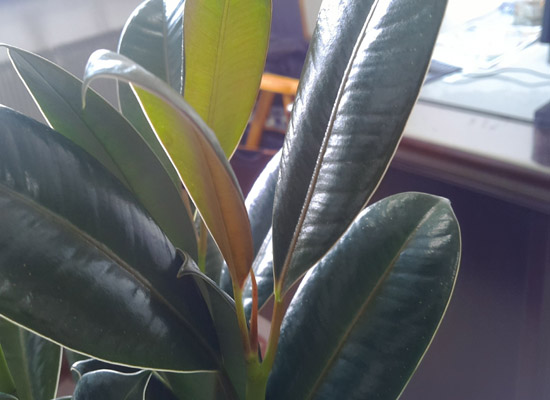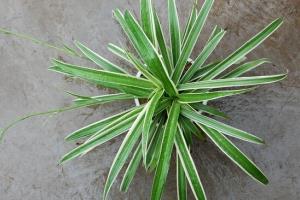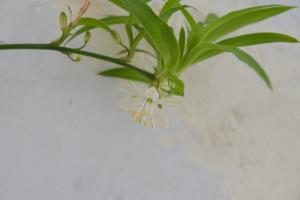A brief introduction to the propagation methods of rubber trees
Rubber trees have high ornamental value, and they are easy to grow and grow vigorously. As a result, many friends may wonder if they can propagate rubber trees by themselves in a simple way. So, what are the breeding methods of rubber trees? The propagation methods of rubber trees are briefly introduced in this paper.

Rubber trees like hot and humid environments, so they grow faster in summer and can grow a leaf in a week. Therefore, it is best to choose the breeding time of rubber trees after mid-May, when the temperature is 25 mi 30 degrees.
Combined with the plant shaping of rubber tree, it can be propagated by the following methods.
1. High branch striping method
Choose one-or two-year-old sturdy branches, peel the width of the cortex around the smooth internodes, then use the prepared barrel-shaped plastic bag to cover the following 1cm of the wound, tie it up, put it into the culture soil, put a handful of soil, and then fasten the mouth of the bag to keep the bag moist. If the bag is dry, you can use syringes to replenish water from the upper part of the bag, and you can see the new root after 20 days. When the new root grows to a certain extent, the new plant can be cut off from the lower joint of the soil bag, remove the plastic bag, bring the soil ball to the basin, and leave it in the shade for a week. If after girdling, cotton is dipped in water to wash the milk, and then cotton is dipped in 10% indole acetic acid to cover the wound, it can take root 10-15 days ahead of time, 20 days ahead of time, and the survival rate is up to 100%. This method is suitable for family breeding, easy to operate, fast forming, and the soil can be prepared with 1 part of sun-dried pastoral topsoil, 1 part of fine sand and rotten leaf soil.
2. Seedling bed branch insertion method
In spring, when the temperature reaches the right temperature, first set up the seedbed, then spread the sifted soil, then select the 2012 branches, three leaf nodes as a segment, cut off the lower two leaves, bundle them into small bundles, soak them vertically in 800-1000mg/L neoacetic acid or indole acetic acid, and then insert them directly into the prepared seedbed at a depth of half the length of the cuttings. When inserting, the hole should be introduced on the seedling bed with a steel rod with a diameter of 6, so as to avoid scraping of cuttings, separation of xylem and phloem, resulting in rot and necrosis of cuttings, which is also the key to the success of branch cutting. In addition, the row spacing of the seedbed plants should be appropriate and often keep the bed soil moist, and if possible, a small plastic arch shed can be built on the nursery bed to increase the ground temperature. with this method, a large number of seedlings can be propagated and seedlings can be put on the pot in 45 days.
Third, green branch water insertion method
When the temperature reaches 23 400mg/L 35 degrees, cut off a pointed branch of the rubber tree with 10cm, cut off two or three leaves in the lower part, and retain the upper part (then put the branches in the bottle and fix them in indole acetic acid solution with a depth of half that of the branches, change the solution every 3 days, and take root from 20 to 30 days. When the new root grows to a certain extent, it can be pulled out of the upper basin, and then placed under the shade shed to slow the seedling, this method is both convenient and ornamental.
Among the above rubber tree propagation methods, the simplest one can be said to be the green branch water insertion method, and this kind of propagation method is very observant. If you are interested, you might as well give it a try in the early summer of next year.
Related
- Wuhan Hospital Iron Tree Blooming Result Was Instantly Frightened by the Gardener Master
- Which variety of camellia is the most fragrant and best? Which one do you like best?
- What is the small blue coat, the breeding methods and matters needing attention of the succulent plant
- Dormancy time and maintenance management of succulent plants during dormancy
- Minas succulent how to raise, Minas succulent plant pictures
- What are the varieties of winter succulent plants
- How to raise succulent plants in twelve rolls? let's take a look at some experience of breeding twelve rolls.
- Attention should be paid to water control for succulent plants during dormant period (winter and summer)
- Watering experience of twelve rolls of succulent plants
- Techniques for fertilizing succulent plants. An article will let you know how to fertilize succulent plants.



